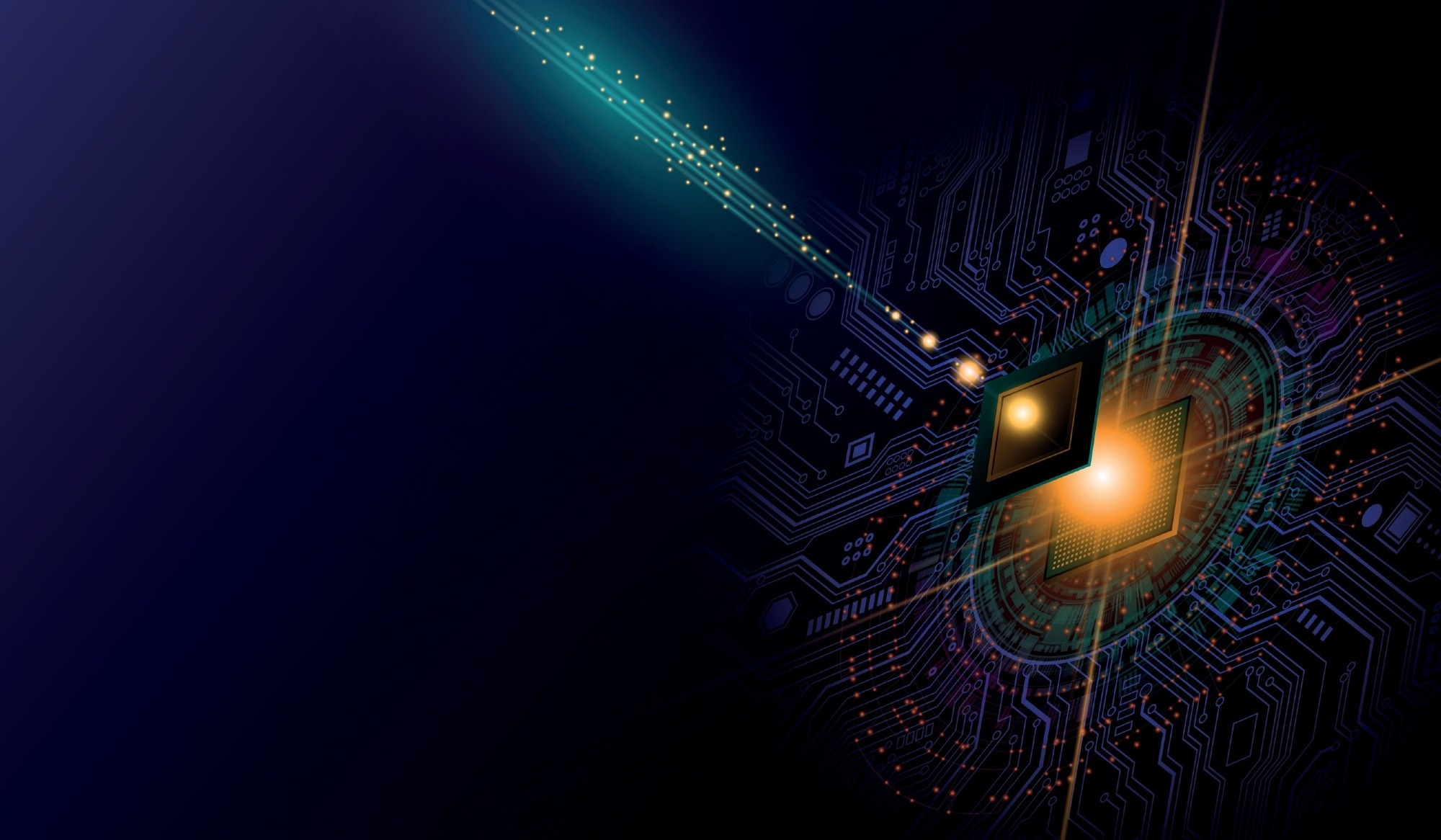In a new study published in the journal Nature Materials, scientists have demonstrated new quantum materials based on the emerging physical phenomenon called Berry curvature. Future optoelectronics and other next-generation electronic devices stand to benefit immensely from these new quantum electronic characteristics.

Image Credit: prawest/Shutterstock.com
Future telecommunications and quantum technology will require advanced, fast, and versatile electronic capabilities. They must be able to process electromagnetic signals in the picosecond range, or 1,000,000,000,000,000th of a second. With today's semiconductor materials, like silicon, which is frequently utilized in the electronic components of phones, computers, and gaming consoles, this is unimaginable. Scientists have been concentrating on creating new quantum materials that can handle such demands.
A research collaboration led by the University of Geneva, along with scientists from Salerno, Utrecht, and Delft universities, has developed a material that allows it to control its electron dynamics through its geometry.
Berry Curvature
Physical phenomena that have their origins in the geometry of electronic wavefunctions can be observed in quantum materials. A geometrical characteristic of an energy band called the Berry curvature captures how eigenstates change as a local function of parameters. Large Berry Curvatures often form when electronic states mix at finite crystal momentum and have distinct spin, orbital, or sublattice quantum numbers.
The ability of electrons to evolve in curved space is one of quantum matter's most intriguing characteristics. The force fields generate dynamics that are unobserved in conventional materials as a result of this distortion of the space that the electrons occupy. This is an excellent use of the quantum superposition principle.
From a theoretical standpoint, there are no constraints on the particular characteristics of a material's low-energy electronic excitations for the development of Berry Curvature. The sole dependence comes from the crystalline geometry of the material. The accomplishment of this challenge is quite intriguing. It can theoretically lead to the coexistence of various Berry curvature-generating methods.
As a result, many Berry Curvature-mediated phenomena, such as spin and orbital Hall effects, might be added to a single-material system. It can also open up a new area in condensed-matter physics by enabling the design of materials with correlated and topological physics acting in concert.
Sources of Berry Curvature at Oxide Interfaces
In the current study, the scientists have identified the first material system with Berry curvature originating from both spin and orbit. They have fabricated an insulating material interface between which a very tiny layer of unbound free electrons can be manipulated. The interface spacing is surrounded by the insulating oxides strontium titanate and lanthanum aluminate.
With a high-temperature trigonal crystalline structure, the research team achieved a two-dimensional electron system.
The coexistence of a spin-sourced and an orbital-sourced Berry Curvature is caused by spin-orbit coupling, orbital degrees of freedom connected to the low-energy electrons, and crystal fields. Using two distinct charge transport diagnostic instruments, the two sources are independently investigated.
Experimental Details
The experimental sample was grown using laser ablation. A high-purity lanthanum aluminate, targeted by pulsed laser deposition utilizing an excimer laser at a wavelength of 248 nm resulted in the sample used for synthesis.
Using reflection high-energy electron diffraction, the intensity oscillations are tracked to ensure the layer-by-layer growth attains the exact predetermined stack thickness.
A nine-unit-cell-thick lanthanum aluminate crystalline layer is formed on the Titanium oxide-rich surface of a strontium titanate substrate in the desired orientation. By observing intensity oscillations in a layer-by-layer growth mode, the sample growth is monitored in real-time.

Image Credit: Dmitriy Rybin/Shutterstock.com
To manufacture the device, lithography was administered on blanket films of lanthanum aluminate that were oriented and aligned along two orthogonal crystal axes. Electron-beam lithography is employed in a polymethyl methacrylate resist that serves as a hard mask for argon-ion milling.
To prevent the formation of an oxygen-deficient conducting strontium titanate surface, the dry-etching time is calibrated and stopped to end exactly when the lanthanum aluminate layer is completely removed.
In a liquid helium-4 flow cryostat with a superconducting magnet, standard electrical transport tests were carried out at a temperature of 1.5 K.
Electrostatic-field effects govern the conductance and carrier density within such materials.
Using a typical lock-in detection method and a source of oscillating current with a pre-set frequency along each orientation simultaneously, measurements were conducted.
Results and Outlook
The purely orbital-based method presented by the researchers opens the door to atomic-scale creation of nonlinear electrodynamic quantum sources that are stable up to ambient temperature. Moreover, several sources of Berry curvature can be used to perform combined optoelectronic and spintronic functions in a single-material system. For example, spin-sourced Berry curvature can be used to construct spin Hall voltages using photogalvanic currents resulting from orbital-sourced Berry curvature.
This research also outlines a universal method for producing topological charge distributions in highly correlated materials, opening up a wide area for investigation at the point where topology and correlations converge.
More from AZoQuantum: Quantum Algorithms in Multiverse Computing's 'Singularity' Software
References and Further Reading
Lesne, E., Saǧlam, Y.G., Battilomo, R. et al. Designing spin and orbital sources of Berry curvature at oxide interfaces. Nat. Mater. (2023). https://doi.org/10.1038/s41563-023-01498-0
M. Trama, V. Cataudella, C. A. Perroni, F. Romeo, and R. Citro. Gate tunable anomalous Hall effect: Berry curvature probe at oxides interfaces. Phys. Rev. B 106, 075430 – Published 29 August 2022. DOI:https://doi.org/10.1103/PhysRevB.106.075430
University of Geneva. (20 March 2023) Sculpting quantum materials for the electronics of the future. [Online] Phys.org. Available at: https://phys.org/news/2023-03-sculpting-quantum-materials-electronics-future.html
Disclaimer: The views expressed here are those of the author expressed in their private capacity and do not necessarily represent the views of AZoM.com Limited T/A AZoNetwork the owner and operator of this website. This disclaimer forms part of the Terms and conditions of use of this website.